GET ROBOT BARISTA!
If you want to order your own robot barista or if you have any questions about the product, feel free to contact us.
By submitting this form you agree to our privacy policy.
COFFEE CONSUMER BEHAVIOR SURVEY
The survey focuses on the consumption of coffee in New York. Send a request and get a link to the survey.
By submitting this form you agree to our privacy policy.
Contact us
Fill free to ask any questions about the product or the company
By submitting this form you agree to our privacy policy.
ROZUM CAFÉ. PRICE CALCULATOR
Send a request for our ROI calculator.
Use it to plan your own robot barista payback period.
Use it to plan your own robot barista payback period.
By submitting this form you agree to our privacy policy.
GET DATASHEET!
Fill out the form to receive the datasheet.
By submitting this form you agree to our privacy policy.
Get rrr-robotized with us
Subscribe and get monthly updates on what's happening on the robot baristas' lives. No spam. You have a robotic word!
By submitting this form you agree to our privacy policy.
USA FRANCHISING MAP
Send us request and get a map that shows state specific franchise laws and fees for franchisors
By submitting this form you agree to our privacy policy.

Special Offer
First unit in your country with a 20% discount.
Want to know more details?
Please, contact your manager.
Aleksandr Maksimovich
Business Development Manager
Nalarobot Robotics | Nalarobot Café
Mobile: +375 333 760 460
(WhatsApp | Telegram | Viber)
Want to know more details?
Please, contact your manager.
Aleksandr Maksimovich
Business Development Manager
Nalarobot Robotics | Nalarobot Café
Mobile: +375 333 760 460
(WhatsApp | Telegram | Viber)
BLOG

How to Enhance Efficiency with Precise Robotics in Your Workflow
In today's rapidly evolving industrial landscape, the integration of Precise Robotics into workflows has proven to be a game changer in enhancing operational efficiency. According to a report by McKinsey, companies that have adopted advanced robotics within their production lines have seen productivity increases of up to 30%. Furthermore, research from the International Federation of Robotics reveals that the global market for robotics is projected to reach $160 billion by 2025, emphasizing the growing reliance on precise automation. As organizations strive to streamline processes and reduce errors, leveraging Precise Robotics can lead to not only improved speed and accuracy but also significant cost savings. This article will explore effective strategies for incorporating Precise Robotics into your workflow to achieve unparalleled efficiency and a competitive edge in the market.
Read more »
 By:Elena - October 12, 2025
By:Elena - October 12, 2025
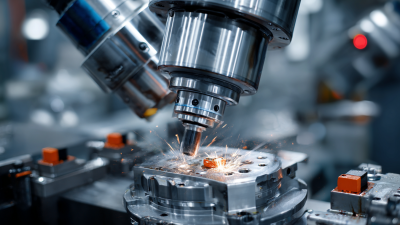
How to Transform Your Manufacturing Process with Robotic CNC Machines: Key Benefits and Insights
In recent years, the manufacturing landscape has witnessed a significant transformation driven by advancements in automation and robotics. The integration of Robotic CNC Machines into production lines has revolutionized the way manufacturers operate, offering unprecedented precision and efficiency. According to a report by the International Federation of Robotics, global sales of industrial robots, including CNC machines, have surged by over 12% annually, highlighting the growing reliance on automation in manufacturing processes. Furthermore, a study from the McKinsey Global Institute suggests that adopting robotic technologies can increase productivity by up to 30% while reducing operational costs by 20%. By leveraging the capabilities of Robotic CNC Machines, manufacturers can enhance their competitive edge, streamline operations, and adapt to the ever-evolving demands of the market. This article delves into the key benefits and insights that come from transforming manufacturing processes with these advanced technologies.
Read more »
 By:Elena - October 7, 2025
By:Elena - October 7, 2025

How to Enhance Manufacturing Efficiency by Integrating Production Robots: Insights and Data
In the rapidly evolving landscape of manufacturing, the integration of Production Robots has emerged as a pivotal strategy for enhancing operational efficiency. According to a report by the International Federation of Robotics, global sales of industrial robots reached a record high of 384,000 units in 2021, signifying a sustained trend towards automation across various sectors. This shift is not merely a response to labor shortages but also a proactive measure to boost productivity and reduce operational costs. With research from McKinsey highlighting that automation can increase production efficiency by up to 30%, manufacturers are recognizing the potential of Production Robots to streamline workflows, enhance precision, and increase output. By embracing this technology, companies can not only stay competitive in a crowded marketplace but also drive innovation in their production processes, paving the way for a more agile and responsive manufacturing environment.
Read more »
 By:Elena - October 7, 2025
By:Elena - October 7, 2025
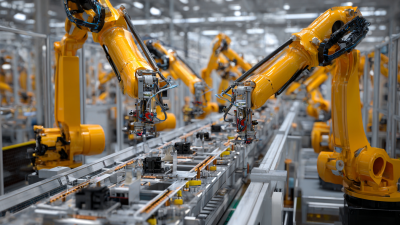
How to Integrate Production Robots for Maximum Efficiency and Cost Savings
As industries worldwide seek to enhance operational efficiency and reduce costs, the integration of Production Robots has emerged as a pivotal strategy. According to a recent report by the International Federation of Robotics (IFR), the global market for industrial robots is projected to reach $70 billion by 2025, driven by advancements in automation and AI technologies. Furthermore, research conducted by McKinsey & Company indicates that companies that effectively leverage robotics can achieve productivity improvements of up to 30%. By strategically implementing Production Robots, businesses not only streamline their manufacturing processes but also gain a competitive edge in a rapidly evolving marketplace. This article delves into best practices for integrating these advanced technologies to maximize efficiency and realize significant cost savings.
Read more »
 By:Elena - October 7, 2025
By:Elena - October 7, 2025
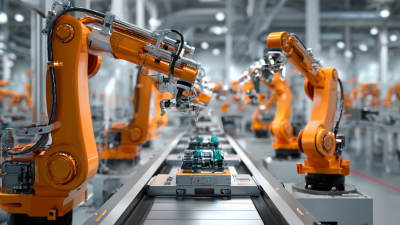
How to Harness the Power of Production Robots for Your Business Success
In today's fast-paced and highly competitive business landscape, striving for efficiency and innovation is more crucial than ever. One of the most transformative technologies available to businesses is "Production Robots." These advanced automated systems have the potential to revolutionize manufacturing processes by improving precision, increasing throughput, and significantly reducing operational costs. This guide aims to unveil the multifaceted ways to effectively integrate production robots into your operations. By harnessing their capabilities, organizations can not only streamline productivity but also enhance product quality and adaptability in an ever-evolving market. Whether you are a small enterprise or a large corporation, understanding how to leverage production robots will provide you with a substantial competitive edge and drive long-term success.
Read more »
 By:Sophia - October 7, 2025
By:Sophia - October 7, 2025

Exploring Innovative Alternatives to the Robot Barista Experience
In contemporary cafés, the emergence of the Robot Barista has revolutionized the way we experience coffee, merging technology with our daily ritual. However, as we delve deeper into the intersection of innovation and customer satisfaction, it becomes evident that there are compelling reasons to explore alternatives to the traditional Robot Barista experience. This blog will examine not only the limitations of robotic solutions in delivering personal service but also the innovative approaches being adopted by coffee shops to enhance customer engagement, the artistry behind coffee-making, and the importance of human interaction in creating a memorable café atmosphere. By highlighting a spectrum of inventive alternatives, we aim to showcase how these new strategies can coexist or even surpass the efficiencies offered by the Robot Barista, ensuring that the future of coffee culture is both exciting and authentically human.
Read more »
 By:Elena - September 20, 2025
By:Elena - September 20, 2025
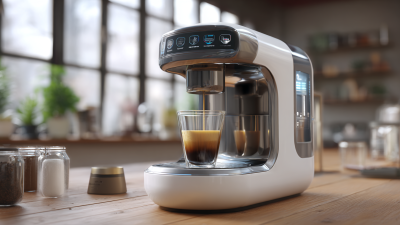
7 Digital Innovations Transforming Your Coffee Robot Experience
As the coffee industry continues to evolve, digital innovations are reshaping the way consumers engage with their favorite beverage. Coffee robots, which have been gaining traction in both commercial and home settings, are at the forefront of this transformation. According to a report by Mordor Intelligence, the global coffee market is projected to reach USD 102.15 billion by 2026, with automation and digital solutions contributing significantly to this growth. Consumers now seek personalized experiences and convenience, leading to an increase in demand for smart coffee machines. Furthermore, a study by ResearchAndMarkets reveals that the coffee robot segment alone is expected to witness a CAGR of over 10% in the next five years. This blog explores seven groundbreaking digital innovations that are enhancing the Coffee Robot experience, making it not only about brewing coffee but also creating an interactive, tech-savvy ritual that caters to modern preferences.
Read more »
 By:Alexander - September 16, 2025
By:Alexander - September 16, 2025
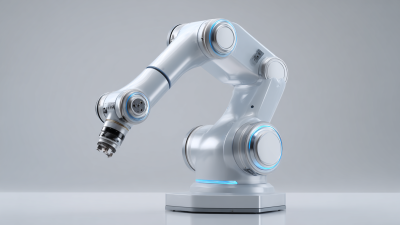
7 High-Performance Features of the Desktop Robot Arm That Will Transform Your Workflow
In an era where efficiency and automation are paramount, the emergence of the Desktop Robot Arm is set to revolutionize various industries. According to a report by MarketsandMarkets, the global robotics market is projected to reach $210 billion by 2025, driven largely by advancements in automation technologies. These compact and versatile robotic arms offer a range of high-performance features that can significantly enhance workflows across sectors from manufacturing to research and design. With their ability to perform repetitive tasks with precision, integrate seamlessly with existing systems, and reduce operational costs, Desktop Robot Arms are not just a trend but a transformative tool for businesses aiming to innovate and stay competitive. As we delve into the seven high-performance features of the Desktop Robot Arm, it becomes clear that the future of automation is both accessible and impactful.
Read more »
 By:Sophia - September 10, 2025
By:Sophia - September 10, 2025

Transforming Industries: Real-World Examples of Cooperative Robots in Action
In today's rapidly evolving industrial landscape, the integration of technology is redefining productivity and efficiency. Central to this transformation are Cooperative Robots, or cobots, which are designed to work alongside humans in a shared workspace, enhancing both safety and productivity. Unlike traditional industrial robots that operate in isolation, cooperative robots have the unique ability to collaborate with human workers, adapting to their movements and responding intuitively to their needs. This blog will explore real-world examples showcasing the diverse applications of cooperative robots across various industries, highlighting their role in streamlining operations, improving workplace safety, and driving innovation. From manufacturing floors to healthcare environments, we will delve into how these intelligent machines are not only enhancing human capabilities but also fostering a new era of collaboration between humans and machines.
Read more »
 By:Elena - September 7, 2025
By:Elena - September 7, 2025

Exploring Innovative Coffee Robot Designs: Examples That Redefine Brewing
The coffee industry is experiencing a technological renaissance, with innovations such as the "Coffee Robot" redefining the brewing experience for consumers and businesses alike. According to a recent report by Allied Market Research, the global coffee machine market is projected to reach $16.67 billion by 2025, driven by advancements in automation and robotics. As more coffee enthusiasts seek convenience and quality, coffee robots have emerged as a game-changing solution that combines precision brewing with cutting-edge design. These machines not only streamline the brewing process but also deliver a consistent and customized cup of coffee, appealing to both casual drinkers and connoisseurs. In this blog, we will explore various innovative coffee robot designs that are setting new standards in the industry, illustrating how technology is shaping the future of coffee preparation.
Read more »
 By:Elena - September 3, 2025
By:Elena - September 3, 2025

How to Choose the Perfect Robot Coffee Machine for Your Home
As the coffee machine market continues to evolve, the rise of innovative technologies has introduced the Robot Coffee Machine, revolutionizing the way we brew our favorite beverages at home. According to recent reports, the global coffee machine market is expected to reach over $10 billion by 2025, with a significant portion driven by the increasing demand for automated solutions in daily routines. A Robot Coffee Machine not only offers the convenience of automation but also ensures precision in brewing, catering to the preferences of coffee enthusiasts. With various models available, selecting the perfect Robot Coffee Machine can be both exciting and overwhelming. This guide aims to help you navigate through essential factors to consider, ensuring that your investment enhances your home brewing experience and satisfies your coffee cravings.
Read more »
 By:Elena - August 27, 2025
By:Elena - August 27, 2025
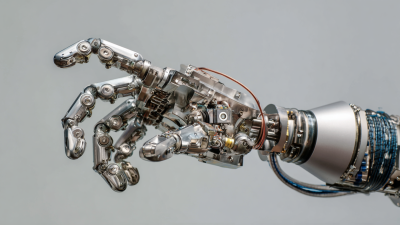
Exploring Unique Features and Applications of Various Desktop Robot Arm Options
As industries increasingly embrace automation, the demand for Desktop Robot Arms has surged significantly, reshaping the landscape of manufacturing and education. According to a recent report by MarketsandMarkets, the global desktop robotics market is projected to grow from $1 billion in 2020 to over $5 billion by 2025, reflecting a compound annual growth rate (CAGR) of 32.4%. This remarkable growth is fueled by the versatility of desktop robot arms, which are transforming tasks ranging from simple assembly and precise machining to advanced applications in research and education. The unique features of these robotic systems, combined with reliable quality synonymous with "Made in China," are making them an essential tool for both hobbyists and professionals alike. This blog delves into the distinctive characteristics and practical uses of various desktop robot arm options, highlighting their pivotal role in driving innovation across different sectors.
Read more »
 By:Alexander - August 22, 2025
By:Alexander - August 22, 2025
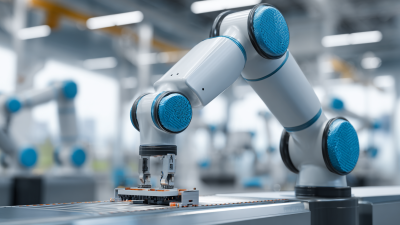
Digital Revolution Enhancing the Best Collaborative Robot Arm Experience
As industries increasingly embrace automation, the demand for Collaborative Robot Arms, or cobots, has grown significantly. According to a report by MarketsandMarkets, the global market for collaborative robots is expected to reach $12.3 billion by 2025, driven by their ability to work alongside humans safely and enhance productivity. This rapid evolution in robotics technology necessitates companies to seek high-quality suppliers that can offer reliable and cutting-edge solutions tailored to their specific needs. To navigate this complex landscape effectively, it is imperative to employ top strategies for selecting suppliers that specialize in Collaborative Robot Arms. By identifying partners who not only provide superior products but also furnish comprehensive support and innovation, businesses can maximize the benefits of these transformative technologies in their operations.
Read more »
 By:Elena - August 17, 2025
By:Elena - August 17, 2025
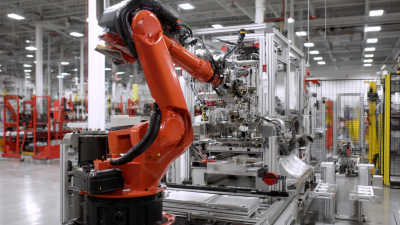
The Future of Precision Manufacturing: Embracing the Best Robotic Machining Solutions
In the rapidly evolving landscape of manufacturing, precision has become paramount, and one of the most significant advancements shaping this future is Robotic Machining. As industries strive for efficiency, accuracy, and reduced labor costs, robotic solutions are emerging as game-changers in the machining process. This blog explores the intricate technical specifications that define the best robotic machining solutions available today, highlighting their capabilities and the innovations driving their development. Additionally, we will delve into practical insights on how to effectively integrate these robotic systems into existing manufacturing setups, ensuring a seamless transition toward a more automated and precise production environment. Join us as we examine the potential of robotic machining to revolutionize precision manufacturing and drive industries forward.
Read more »
 By:Elena - August 12, 2025
By:Elena - August 12, 2025
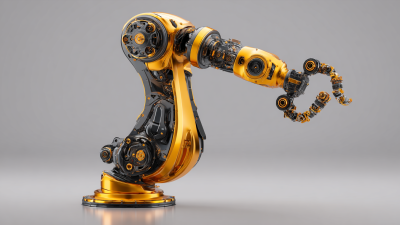
The Ultimate Guide to Designing the Best Robotic Arm: Maximizing Efficiency and Precision in Automation
In today's rapidly evolving landscape of automation, the significance of Robotic Arm Design cannot be overstated. As industries strive to enhance productivity and precision, the quest for the best robotic arm becomes paramount. This comprehensive guide aims to equip innovators, engineers, and enthusiasts with the insights necessary to maximize the efficiency and accuracy of their robotic arm projects. By delving into the intricacies of effective design principles, material selection, and advanced technologies, we will explore how to create a robotic arm that not only meets operational demands but also excels in versatility and adaptability. Whether you're embarking on your first project or seeking to refine existing designs, this ultimate guide will serve as a valuable resource in navigating the complexities of robotic arm design, paving the way for future advancements in automation.
Read more »
 By:Alexander - August 7, 2025
By:Alexander - August 7, 2025
